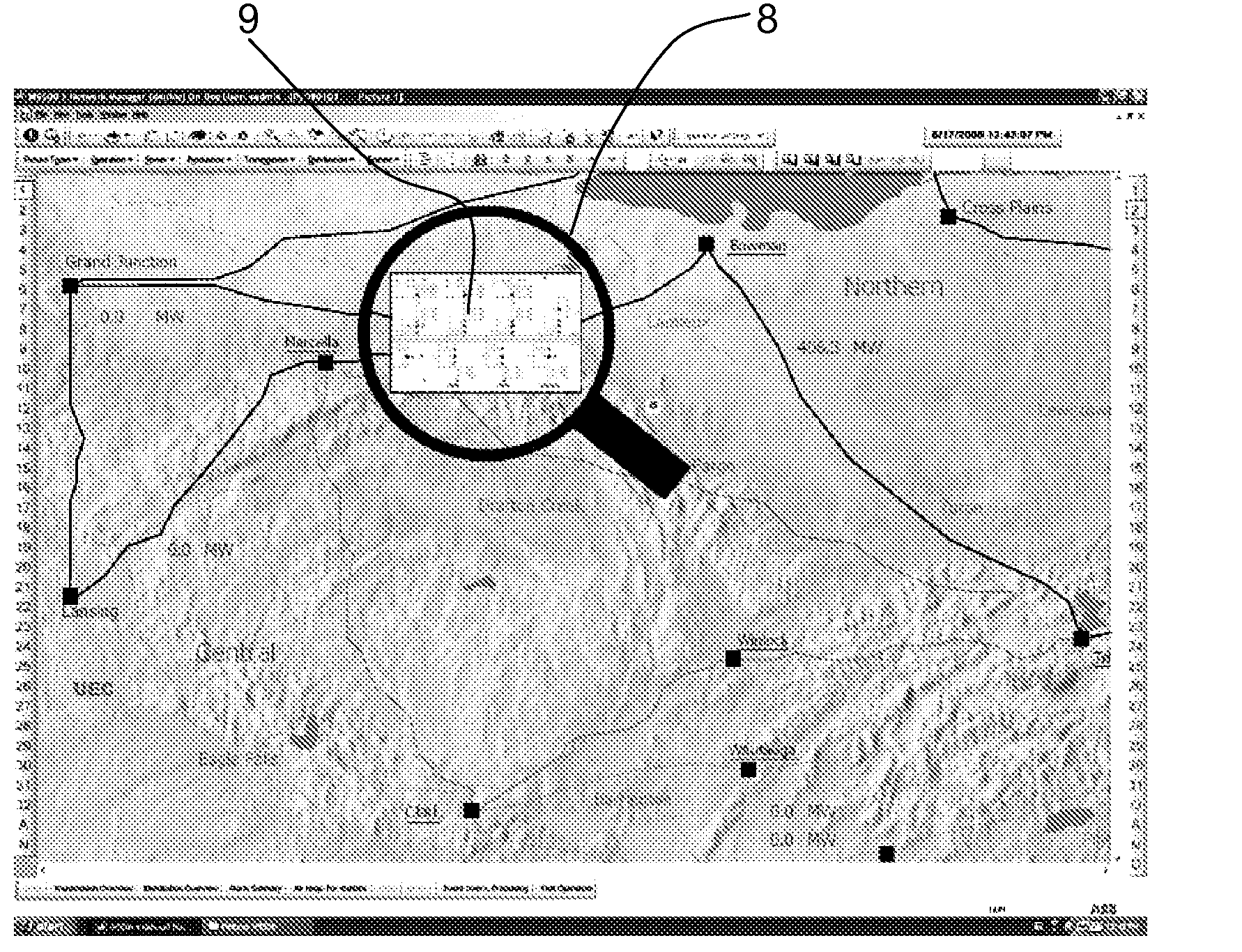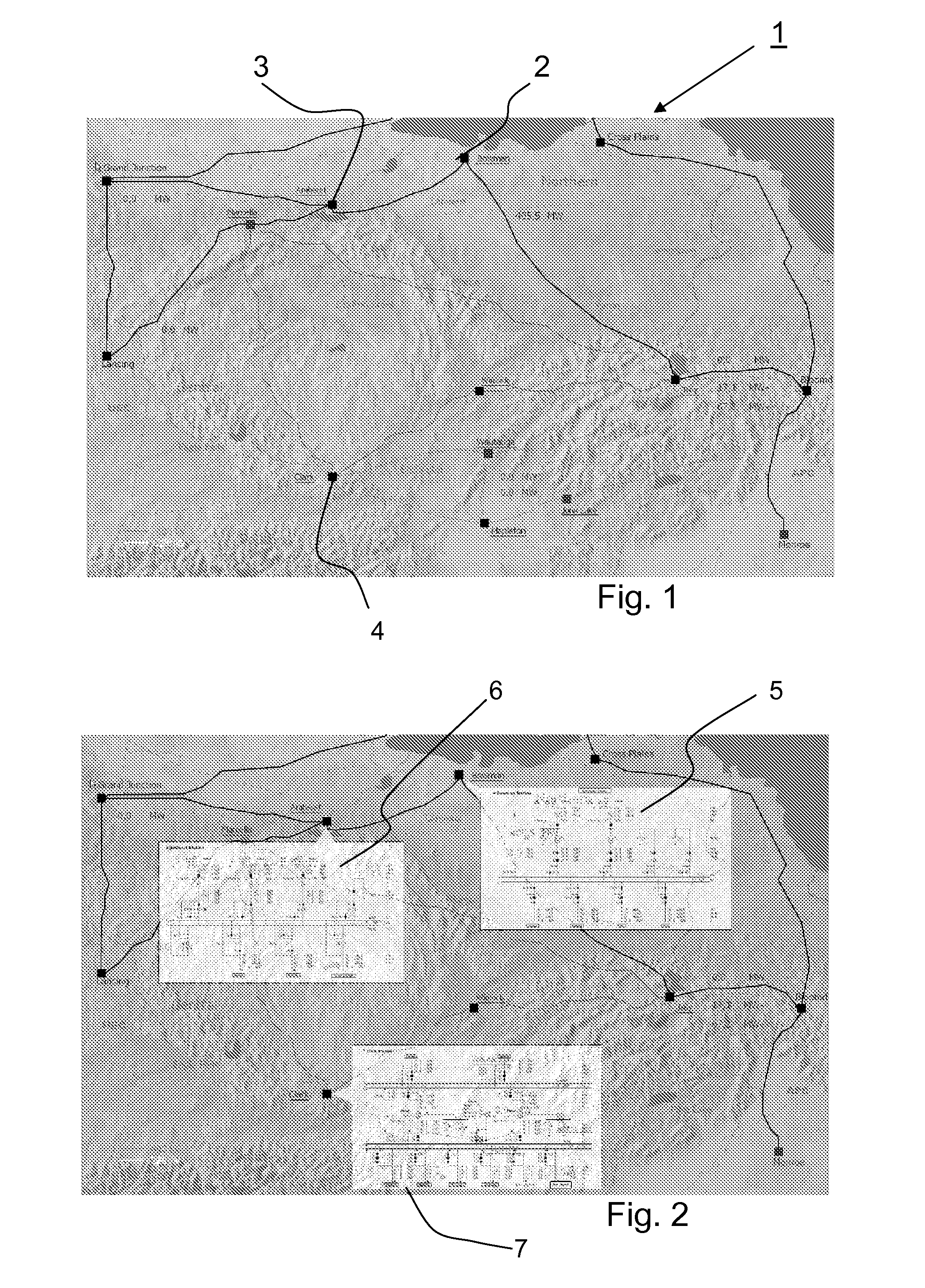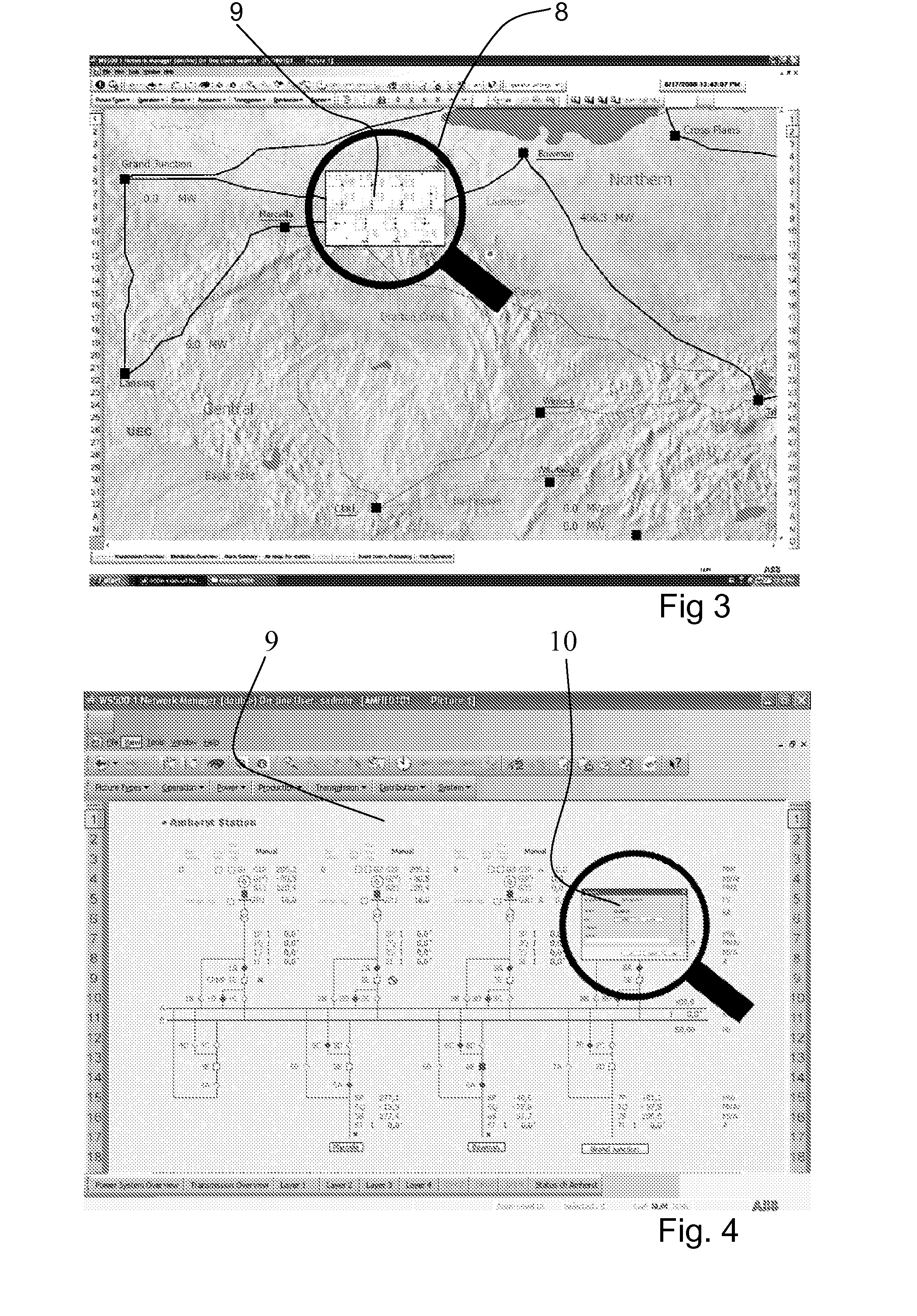Supervisory control system, method and computer program products
- Summary
- Abstract
- Description
- Claims
- Application Information
AI Technical Summary
Benefits of technology
Problems solved by technology
Method used
Image
Examples
Embodiment Construction
[0030]FIG. 1 illustrates an exemplary overview picture 1, usable when monitoring a power network system by means of a supervisory control system. The overview picture 1 comprises a map over several substations in the power network, for example substations located in Bowman, Amherst and Clark. The substations are examples of objects 2, 3, 4 present in the overview picture 1. The overview picture 1 thus illustrates the geographic location of the substations. Obviously the operator needs to known more than the location of the substations, and the supervisory control system therefore comprises more detailed information about the objects 2, 3, 4. For example, there may be a single line diagram for each substation, a list of alarms for each substation, measurement values, calculations etc.
[0031]FIG. 2 illustrates detailed information views 5, 6, 7 for the objects 2, 3, 4 of the overview picture 1 illustrated in FIG. 1. In accordance with the invention, the detailed information views 5, 6,...
PUM
 Login to View More
Login to View More Abstract
Description
Claims
Application Information
 Login to View More
Login to View More - R&D
- Intellectual Property
- Life Sciences
- Materials
- Tech Scout
- Unparalleled Data Quality
- Higher Quality Content
- 60% Fewer Hallucinations
Browse by: Latest US Patents, China's latest patents, Technical Efficacy Thesaurus, Application Domain, Technology Topic, Popular Technical Reports.
© 2025 PatSnap. All rights reserved.Legal|Privacy policy|Modern Slavery Act Transparency Statement|Sitemap|About US| Contact US: help@patsnap.com



